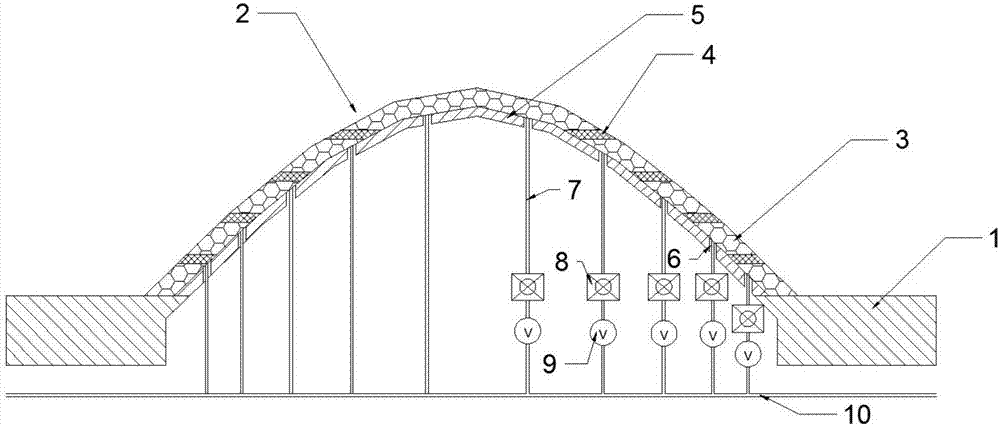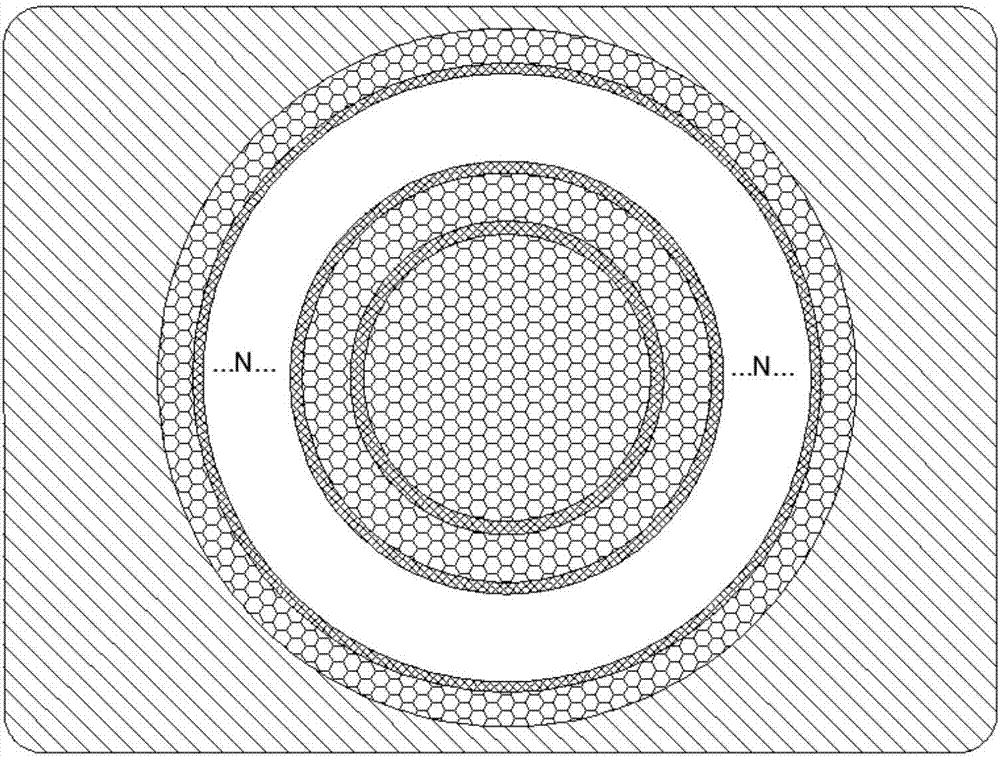Controllable three-dimensional optical invisible cloak based on multiple graphene loop layers
A multi-layer graphene and three-dimensional optics technology, applied in optics, nonlinear optics, clothing, etc., can solve the problem that the stealth function does not have tunability, etc., and achieve the effect of prolonging camouflage time, saving energy, and huge application value
- Summary
- Abstract
- Description
- Claims
- Application Information
AI Technical Summary
Problems solved by technology
Method used
Image
Examples
Embodiment 1
[0028] First, an inner support shell 5 is formed on the substrate 1 by a material growth process, as shown in FIG. 2(a);
[0029] Then, through the material growth process and the mask process, the designed graphene ring layers are superimposed layer by layer on the outer surfaces of the substrate 1 and the inner support shell 5 from bottom to top to realize the N-layer graphene surface ring layer structure 2, such as Figure 2(b) shows. Among them, the design of the graphene surface ring layer and the inner support shell can use algorithms such as finite time domain difference method and finite element method.
[0030] Small holes 6 are drilled in the inner support shell corresponding to each graphene ring layer. A wire 7 is installed in the small hole, one end of the wire is connected to the graphene ring layer, and the other end passes through the control unit 8 and the ground wire 10 of the energy supply unit 9. By manipulating the control unit 8, the energy supply unit 9 ...
PUM
| Property | Measurement | Unit |
|---|---|---|
| pore size | aaaaa | aaaaa |
| depth | aaaaa | aaaaa |
| depth | aaaaa | aaaaa |
Abstract
Description
Claims
Application Information
 Login to View More
Login to View More - R&D Engineer
- R&D Manager
- IP Professional
- Industry Leading Data Capabilities
- Powerful AI technology
- Patent DNA Extraction
Browse by: Latest US Patents, China's latest patents, Technical Efficacy Thesaurus, Application Domain, Technology Topic, Popular Technical Reports.
© 2024 PatSnap. All rights reserved.Legal|Privacy policy|Modern Slavery Act Transparency Statement|Sitemap|About US| Contact US: help@patsnap.com










